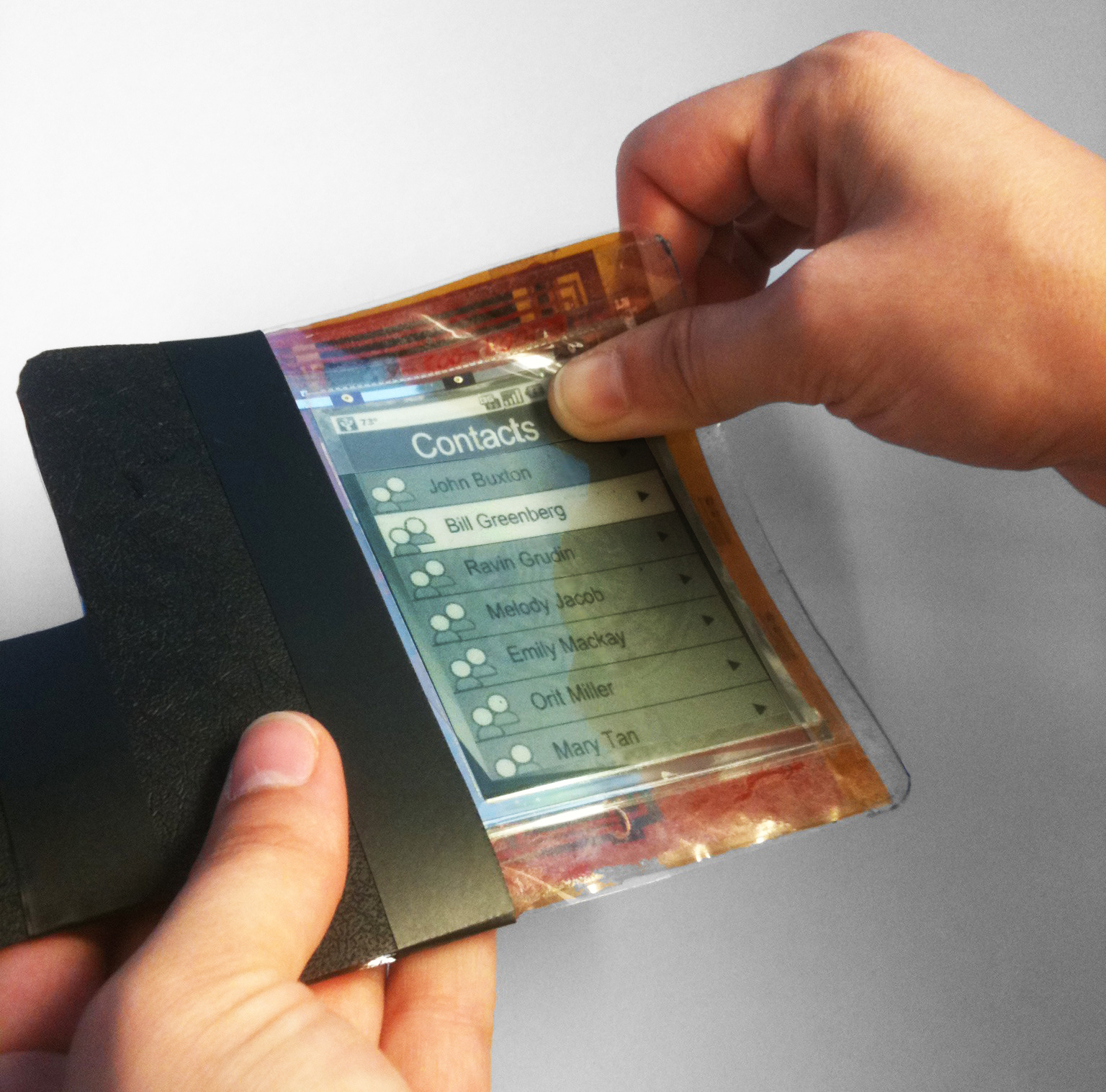Thin, flexible smartphone bends the rules of input

It seems like not a day goes by without someone announcing a new electronic display made of flexible materials. The latest invention is a smartphone prototype called PaperPhone developed by a team of researchers from Arizona State University, Queen’s University, and E Ink Corporation.
Gallery: Smart PaperPhone bends the limits
Described as a "flexible iPhone" the device does everything a smartphone does, such as store books, play music or make phone calls. The similarities end there. The 9.5 cm diagonal bendable device is made of two layers: the e-ink display and a flexible printed circuit with five bend sensors. Bend gestures are fed into a gesture-recognition engine trained to associate certain movements with certain instructions.
"So you can bend the top in order to page forward or make a bookmark, you can navigate left and right on your home screen in order to open an icon, and you can make a call by squeezing the paper so that it curves, and then if you want to stop the call you pop it back into shape," creator Roel Vertegaal, the director of Queen’s University Human Media Lab told the The Vancouver Sun.
“This is the future. Everything is going to look and feel like this within five years,” he said. “This computer looks, feels and operates like a small sheet of interactive paper. You interact with it by bending it into a cell phone, flipping the corner to turn pages, or writing on it with a pen.”
Interaction via bend gestures could particularly be useful to users with poor eyesight or other age-related ailments that prevent coordinated touch control. Beyond that, the applications could be limited.
Regardless, as e-paper concepts like PaperPhone mature and improve in durability and performance (e.g., add color and higher refresh rate), they could pave the way for a new generation of computers that are super lightweight, flexible, and deliver an experience entirely unlike holding a sheet of glass or metal.
The paper computer will be unveiled on May 10 at the Association of Computing Machinery’s CHI 2011 (Computer Human Interaction) conference in Vancouver, BC.
For more information, download the paper: PaperPhone: Understanding the Use of Bend Gestures in Mobile Devices with Flexible Electronic Paper Displays
Related:
